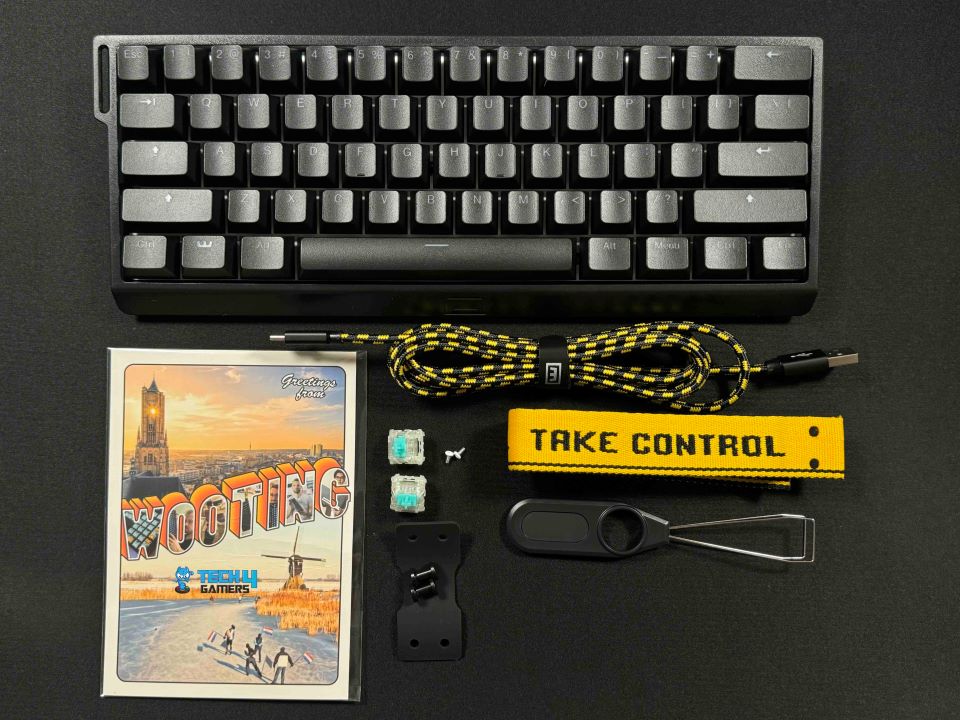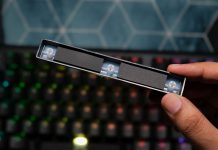- Firstly, Snap Tap or Last Key Priority is the hallmark SOCD feature that has positioned Hall Effect keyboards as superior alternatives to mechanical and optical keyboards.
- Moving on, Hall Effect switches also enable a couple of other practical features that are highly beneficial for gamers, like Dynamic Keystroke, Adjustable Actuation Distance, and Rapid Trigger, to name a few examples.
- As a result, Magnetic keyboards are now being hailed as the go-to option for anyone looking to upgrade their typing hardware, be it for gaming or typing.
Let’s be real: for years, a keyboard was just a keyboard. You pressed a key, it registered, and that was that.
But then, something revolutionary happened. Magnetic, or Hall Effect (HE), keyboards exploded onto the scene, and they didn’t just change the game; rather, they completely rewrote the rules.

And at the heart of this revolution is a nerdy-sounding acronym you need to know: SOCD.
I’m here to tell you why SOCD isn’t just a technical feature; it’s the secret sauce, the magic trick, the absolute cornerstone that transformed HE keyboards from a niche curiosity into a must-have phenomenon.
What Even Is SOCD? The Magic Behind The Curtain
First things first, let’s demystify this. SOCD stands for Simultaneous Opposite Cardinal Direction handling.
Sounds complex, but it’s beautifully simple. Imagine you’re playing a fighting game. You’re pressing both left and right on your keyboard at the exact same time. What should happen?
On a mechanical or optical keyboard, the result is often a crapshoot; maybe it registers the last key pressed, maybe it cancels both out, leaving your character standing still like a fool.
This chaotic, unpredictable outcome is what SOCD clearing fixes. SOCD handling is the intelligent process that takes these conflicting inputs and applies a logical, consistent rule.
The most common and beloved rule in gaming is Neutral SOCD: if you press Left + Right simultaneously, they cancel each other out, resulting in a neutral (no movement) input.
The same goes for Up + Down.
This isn’t just a convenience; it’s a monumental shift in control and precision. And magnetic keyboards, with their analog, software-driven nature, implement this flawlessly.
Beyond Neutral: The Game-Changing SOCD Feature
That being said, SOCD handling is just the foundation. But the real magic? The features that made HE keyboards famous? Those are built on top of SOCD handling. This is where my love affair truly began.
The headliner, without a doubt, is “Snap Tap”, also known as “Last Key Priority.”
This brilliant feature prioritizes the most recent input when you’ve depressed at least two keys (for example, “A” and “D” for strafing left and right).
However, the first/original key will still be immediately registered as soon as you release the most recent key.
In other words, Snap Tap essentially reads the intention of your movement, letting you perform lightning-fast directional changes or button presses with minimal physical effort.
The reduction in finger fatigue and the increase in speed are nothing short of incredible.
Of course, quite a few magnetic keyboards will allow you to customise your SOCD preferences with the help of built-in software.
The Ban Heard ‘Round the World: Proof Of A Meta-Shifting Advantage
You know a competitive advantage is real when the governing body has to step in.
Valve’s decision to ban these SOCD features in CS:GO (now CS2) tournaments wasn’t a PR stunt; it was the ultimate validation.
They recognized that features like Snap Tap provided an unfair edge that circumvented the skill-based muscle memory traditional keyboards required.
It was a watershed moment. Suddenly, every serious competitive gamer sat up and took notice.
If something was so powerful it had to be banned from pro play, it was obviously worth having for rank grinds in every other game.
Needless to say, this single act did more for HE keyboards’ marketing than any ad campaign ever could.
The Perfect Storm: Why HE Keyboards Were Primed For This
For starters, SOCD features couldn’t have achieved this fame on just any keyboard. They needed the right platform, and magnetic keyboards were the perfect vessel.
This is why optical keyboards are scrambling to play catch-up. The reason is inherent to the technology.
To elaborate, Hall Effect sensors are analog by nature. They don’t just detect an on/off state; they measure the precise distance of the keypress.

Precisely, this innate capability is what allows for dynamically adjustable actuation points. You can set a key to actuate at 0.1mm for speed or 4mm for a more deliberate press.
This analog precision is the bedrock upon which SOCD features like Snap Tap are built.
The keyboard is constantly monitoring the exact position of every switch’s magnet, allowing for reset-on-lift and other miracles.
Thank you! Please share your positive feedback. 🔋
How could we improve this post? Please Help us. 😔
[Wiki Editor]
Ali Rashid Khan is an avid gamer, hardware enthusiast, photographer, and devoted litterateur with a period of experience spanning more than 14 years. Sporting a specialization with regards to the latest tech in flagship phones, gaming laptops, and top-of-the-line PCs, Ali is known for consistently presenting the most detailed objective perspective on all types of gaming products, ranging from the Best Motherboards, CPU Coolers, RAM kits, GPUs, and PSUs amongst numerous other peripherals. When he’s not busy writing, you’ll find Ali meddling with mechanical keyboards, indulging in vehicular racing, or professionally competing worldwide with fellow mind-sport athletes in Scrabble at an international level. Currently speaking, Ali has completed his A-Level GCEs with plans to go into either Allopathic Medicine or Business Studies, or who knows, perhaps a full-time dedicated technological journalist.
Get In Touch: alirashid@tech4gamers.com




